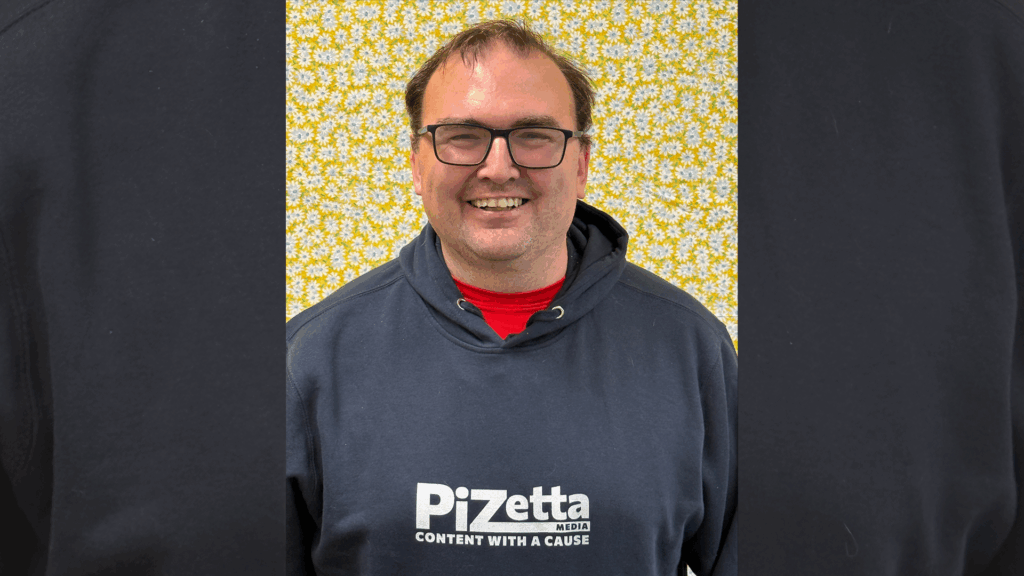Reframing the Narrative: How Media Can Build Belonging
by Mike VanZetta (One Mind Community Advisory Network)

Media Shapes How We See Mental Health
Of all the forces shaping how we see mental health, the media may be the most powerful. The stories we consume in news broadcasts, films, and online platforms can either reinforce stigma or open the door to empathy and belonging. For people living with mental health conditions, this difference can determine whether society sees us as problems to be managed or as leaders with voices worth hearing.
I know this firsthand. My journey through school, broadcasting, and eventually advocacy has shown me both the damage the media can do and the hope it can create.
Living in Silence
As a child, I was placed in learning disability classes. The extra help was necessary, but it carried a weight. No matter how hard I tried to act like everyone else, I couldn’t shake the stigma that came with those labels. The experience of being seen as “less than” taught me early that narratives matter. The stories told about me—by teachers, by classmates, and by the silence surrounding those labels—shaped my identity in ways that lasted for years.
In my twenties, I worked in broadcasting as a newscast director. On the surface, I belonged. Behind the control room glass, I felt confident and in charge. But inside, my mental health was unraveling. I didn’t seek help because I was afraid of stigma. Instead, I hid behind a performance: professional, composed, unshakeable.
By age 37, I could no longer hide. After years of breakdowns and finally seeking treatment, I was diagnosed with bipolar disorder type 2. At first, it was a relief. But when I shared my diagnosis at work, the result was devastating. HR told me my honesty could make others uncomfortable. Opportunities dried up, and leadership roles disappeared. By the time my contract ended, I was on my own.
This experience reflects a larger problem: stigma in workplaces—and in media institutions—silences people. When those creating stories can’t live authentically, the stories they produce often echo that silence.
Finding My Voice Through Storytelling
When I left broadcasting, I started a media company with my wife. At first, it felt like a lonely mission. But slowly, I began to see the potential. By using video to amplify lived experience, I realized the media could normalize mental health conversations instead of stigmatizing them. My wife Jen and our two daughters reminded me I wasn’t alone. Their encouragement fueled my commitment to use storytelling as a way to lift others.
The turning point came when I connected with One Mind, an organization that prioritizes people with lived experience as leaders, not case studies. Before joining their Community Advisory Network, I spoke with member Jon Nelson, whose passion inspired me, and co-founder Brandon Staglin, whose openness about schizophrenia is transforming global conversations. Their honesty showed me what was possible when lived experience was elevated.
When I later became part of the One Mind Community Advisory Network, it felt like coming home. Talking with other members, hearing their stories, and being recognized as a peer was transformative. One Mind didn’t just give me community—it proved the power of storytelling led by lived experience. It changed my life, and it showed me what media can accomplish when authenticity takes center stage.
What Media Can Do Differently
The media influences millions of people every day. To shift from reinforcing stigma to building belonging, here’s what needs to change:
- Center lived experience. Create space for people with mental health conditions to tell their own stories in their own voices.
- Avoid stereotypes. Move away from framing mental illness only through crisis, crime, or tragedy.
- Highlight resilience and leadership. Show that people with diagnoses are parents, professionals, and changemakers.
- Invest in authentic platforms. Support podcasts, video series, and projects that amplify voices outside traditional media.
- Train storytellers. Equip journalists, producers, and content creators with skills to report mental health with dignity and depth.
- Shift from awareness to belonging. Awareness alone isn’t enough—stories should help people feel included and understood.
A Call to Action
My story illustrates both sides of this reality. In school, stigma shaped the story told about me. In broadcasting, silence and discrimination silenced the narrative. But through building my own company and joining One Mind, I’ve experienced the opposite: the power of media to create belonging and leadership opportunities.
Treatment has also been part of this transformation. With daily medication, therapy, psychiatric support, and my family’s encouragement, I’ve built stability. That stability allows me to keep telling stories and creating platforms for others to share theirs.
The media has the power to define what people believe about mental health. If we let stigma drive the narrative, workplaces will exclude valuable workers, families will misunderstand, and individuals will stay silent. But if we commit to authentic storytelling led by lived experience, the media can become one of our greatest allies in building empathy and belonging.
I no longer chase the idea of being “normal.” Instead, I embrace authenticity and vulnerability as strengths. The media once reinforced the stigma that held me back, but now it’s the tool I use to move forward. I believe it can do the same for countless others if we choose to tell the right stories.
